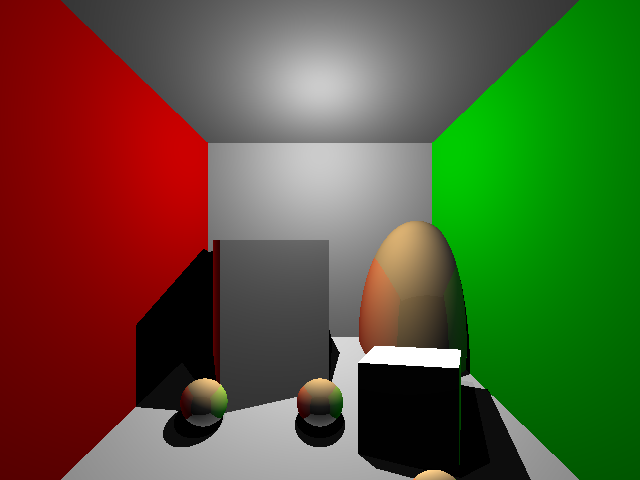These are my notes about the book Head First Design Patterns.
Starting example:
Merge two implementation with ArrayList and Array.
case class MenuItem (
name:String,
description:String,
vegetarian:Boolean,
price:Double){
}
class DinerMenu{
// dinermenu use array
var menuItems:Array[MenuItem] = null
var numberOfItems = 0
def addItem(item: MenuItem):Unit = {
menuItems(numberOfItems) = item
numberOfItems += 1
}
def getMenu = menuItems
}
class PancakeMenu{
// pancakeMenu use arraylist
var menuItems:util.ArrayList[MenuItem] = null
def addItem(item: MenuItem):Unit = menuItems.add(item)
def getMenu = menuItems
}
We want to iterate two menus together, without specifying the data type.
Solution: use Iterator interface, and define createIterator method on both classes
abstract class Iterator[T]{
def hasNext:Boolean
def next:T
}
class DinerMenuIterator(items:Array[MenuItem]) extends Iterator[MenuItem]{
var i:Int = 0
def hasNext = i <= items.length
def next = {
val menu:MenuItem = items(i)
i += 1
menu
}
}
class PancakeMenuIterator(items:util.ArrayList[MenuItem]) extends Iterator[MenuItem]{
var i:Int = 0
def hasNext = i <= items.size()
def next = {
val menu:MenuItem = items.get(i)
i += 1
menu
}
}
// add createIterator method:
class DinerMenu{
// dinermenu use array
var menuItems:Array[MenuItem] = null
var numberOfItems = 0
def addItem(item: MenuItem):Unit = {
menuItems(numberOfItems) = item
numberOfItems += 1
}
// createIterator replace getMenu
def createIterator = new DinerMenuIterator(menuItems)
}
class PancakeMenu{
// pancakeMenu use arraylist
var menuItems:util.ArrayList[MenuItem] = null
def addItem(item: MenuItem):Unit = menuItems.add(item)
def createIterator = new PancakeMenuIterator(menuItems)
}
Now we can use the iterator interface.
class Waitress(pancakeMenu: PancakeMenu, dinerMenu: DinerMenu){
def printMenu = {
val pancakeIterator = pancakeMenu.createIterator
val dinerIterator = dinerMenu.createIterator
printMenu(pancakeIterator)
printMenu(dinerIterator)
}
def printMenu(iter:Iterator) = {
while(iter.hasNext){
println(iter.next)
}
}
}
However, we're still bound to two concrete menu classes --> create a common interface for menu:
abstract class Menu{
def createIterator:Iterator
}
class PancakeMenu extends Menu{
...}
class DinerMenu extends Menu{
...}
class Waitress(menus:Seq[Menu]){
def printMenu = {
menus.map(_.createIterator).foreach(printMenu(_))
}
def printMenu(iter:Iterator) = {
while(iter.hasNext){
println(iter.next)
}
}
}
Composite pattern
Now what if we want to have a dessert "sub menu"? i.e menus within menus.
abstract class MenuComponent{
def isVegetarian:Boolean = false
def print:Unit
def getChild(i:Int):MenuComponent = throw new Exception("unsupported")
}
// "Leaf"
class MenuItem(name:String,
vegetarian:Boolean) extends MenuComponent{
override def isVegetarian = vegetarian
def print = println(s"menu item $name")
}
// "Composite"
class Menu(name:String,
menus:Seq[MenuComponent]) extends MenuComponent{
// Menu holds MenuComponents --> recursive
override def getChild(i:Int) = menus(i)
def print = println(s"menu component $name ${menus.foreach(_.print)}") // print all children
}
class Waitress(menuComponent: MenuComponent){
def print = menuComponent.print
}
Definition
Iterator:
-
Encapsulate iteration
-
Allow access elements of an aggregate (aka Menu) sequentially without exposing its underlying representation.
-
Also place the task of traversal on the iterator, not on the aggregate
Composite
-
Compose objects into tree structures
-
Treat individual objects and compositions uniformly --> Transparency
-
Class diagram: Component -> Leaf or Composite
-
Composite: holds Components. addComponent, getChild, operation
-
Leaf: operation
Design Principle
- A class should be given single responsibility --> have only one reason to change. (eg. aggregate and iterate are two different responsibilities)
Others
- Use a null iterator can be helpful. (always return false for
hasNext)
- Can create an external iterator to iterate through Component, eg, find veggie menuItems.
- in Scala, can use pattern matching and flatMap
class Menu(menus:Seq[MenuComponent]) extends MenuComponent{
...
def getVeggie :Seq[MenuItem] = menus.flatMap {
case m: MenuItem => if (m.isVegetarian) Seq(m) else Nil
case m: Menu => m.getVeggie
}
}

